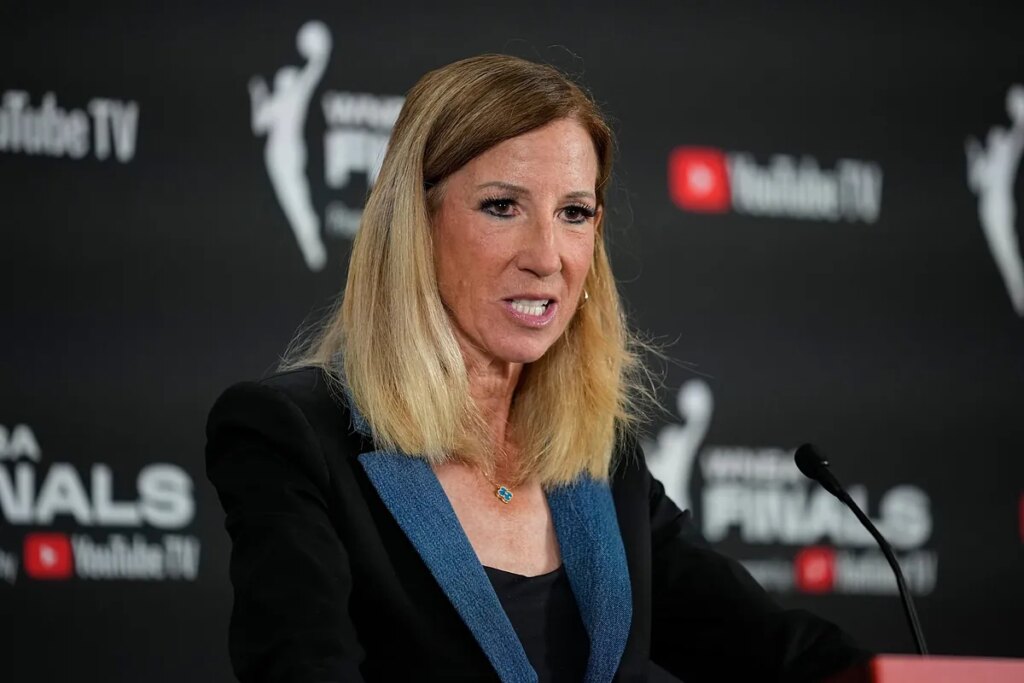The 2025 WNBA season has concluded, crowning a new champion and shifting attention toward a critical offseason as the spotlight now centers on labor negotiations, with the current collective bargaining agreement expiring on October 31.
Both commissioner Cathy Engelbert and the WNBPA aim for what they describe as a “transformational” deal. However, reports indicate the two sides remain apart on key economic and operational terms, raising concerns of a possible lockout.
Among the primary issues are player compensation and revenue sharing. Players want earnings tied directly to league growth rather than fixed figures, creating a dynamic structure similar to the NBA’s basketball-related income model.
“The players are still adamant that we get a percentage of revenue that grows with the business,” WNBPA president Nneka Ogwumike said. “That’s just a part of the conversation.”
That emphasizes how fairness remains central to negotiations as Phoenix Mercury forward Satou Sabally echoed that sentiment, saying a recent league offer felt disconnected from the players’ role in the WNBA‘s rise.
Under the current deal, team salary caps are predetermined, growing by a modest 3% annually, but players argue this system limits their earning potential even as attendance and franchise valuations have surged since 2021.
Because the 2020 CBA began before the pandemic, early revenue projections were skewed. With the “Wubble” season and limited attendance in 2021, teams fell short of growth targets, nullifying mechanisms that could have raised the salary cap.
How can TV money impact the CBA negotiations with the WNBA?
The new media deal beginning in 2026 adds complexity to the debate as the league’s 11-year partnership with Disney, Amazon Prime Video, and NBCUniversal is worth around $2.2 billion, potentially reaching $3 billion with future partners.
Players see that investment and expansion as validation of the WNBA‘s financial strength.
“We’re seeing expansion, and the players are just saying, ‘Hey, let us have our fair share of that,'” Ogwumike said, noting that growth must reflect in pay as star players such as Caitlin Clark and Angel Reese have lifted viewership and attendance.
Another contentious issue is “prioritization,” a rule that restricts players from missing WNBA games due to overseas commitments.
Many athletes, particularly veterans, depend on international contracts to supplement their income and Sabally has voiced concerns that such restrictions limit career flexibility.
She explained that players face varying financial realities, making universal enforcement impractical and sometimes harmful to individual livelihoods.
“It’s interesting to hear about the flow of negotiations,” Sabally added. “Sometimes you want results right away, but it does take time for both parties to come to the table and really agree on certain things.”
Negotiations also address transparency in financial reporting. Players have often felt that they lack access to clear revenue data, which complicates efforts to justify demands for greater revenue sharing and higher salaries.
Reports suggest the WNBA‘s recent proposal raises the supermax salary to about $850,000, with veteran minimums near $300,000. While that marks significant progress, many Ogwumike argue the structure still mirrors the old system.
Rising franchise valuations have also further fueled frustration. The Las Vegas Aces, purchased for $2 million in 2021, are now worth an estimated $310 million, while the New York Liberty‘s valuation has soared to around $450 million.
Players argue those numbers show how much value they bring to the league. So as negotiations intensify, Engelbert faces pressure to balance financial sustainability with fairness.
Read the full article here

